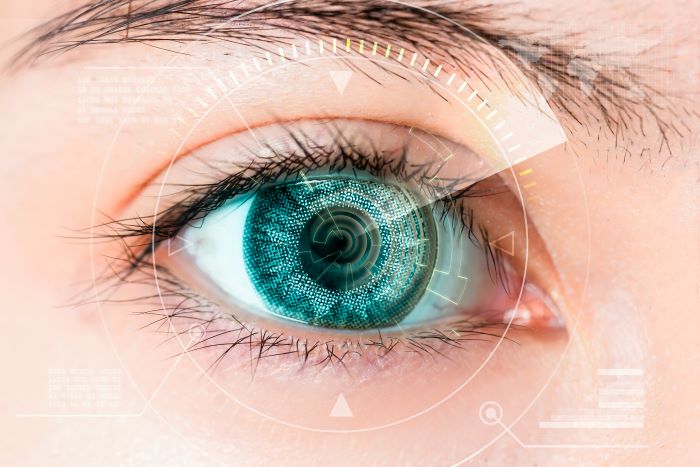How To Test Your Vision At Home
Related Topics (Sponsored Ads):
Read on to understand the signs of potential vision issues and how to conduct key vision tests using basic tools.
Read on to understand the signs of potential vision issues and how to conduct key vision tests using basic tools.

Vision Health 101
Healthy vision depends on all parts of your eye working together flawlessly to deliver sharp, clear sight. The cornea and lens focus light; the retina converts it into signals for the brain; and the muscles surrounding the eye coordinate movements. Problems with any of these components can result in blurred or impaired vision. That’s why routine eye tests are recommended, even if you have no apparent issues. Adults should get complete eye exams every 1-2 years. Between professional visits, keep watch for any changes in your vision through at-home monitoring.
Look for Early Signs of Vision Trouble
Don’t wait until your next exam to notice possible problems. Be aware of common symptoms like persistent blurred or double vision, difficulty reading, eye strain and headaches. Squinting, sensitivity to light or the need to frequently change prescriptions can also indicate underlying issues. If you experience any sudden changes in vision, see an ophthalmologist immediately, as it may signify a serious condition. While some loss of near vision is normal with age, rapid deterioration should always be evaluated promptly.
Some other early warning signs to watch for include:
Halos or auras around lights
Red or swollen eyes
Increased floating spots or flashes
Dry, gritty feeling eyes
Vision that is worse at certain times of day
Documenting any symptoms you notice will help your eye doctor evaluate changes over time. Don’t ignore symptoms assuming they are just part of aging. Catching problems early is key to protecting your sight.
Do-It-Yourself Vision Testing Made Simple
With the right tools, assessing your eyesight is easy and quick to do at home. DIY vision tests mainly check sharpness of distance and near vision, color perception, and eye alignment. Here are three basic examinations you can conduct yourself:
Distance Vision
Use an eye chart to measure visual acuity—the clarity of faraway objects. Charts are measured in feet, so place it 20 feet away. Cover one eye and read lines of letters starting at the top. The smallest row you can read accurately indicates your score (e.g. 20/20 is normal). Test each eye separately. Worsening scores over time can suggest nearsightedness or other focus issues.
Near Vision
Hold reading material 14-16 inches away. Note any difficulty making out words, which may denote developing presbyopia (age-related near vision decline). Insufficient light could also impede close focus, so ensure proper lighting. Checking near acuity determines if you need glasses for computer work or reading.
Color Perception
Online color blindness tests using dot patterns check your ability to distinguish shades across the spectrum. Inability to detect certain hues signifies color vision deficiency, which impacts everyday tasks. Confirm any suspicions professionally.
Regularly monitoring these parameters at home fills in the gaps between eye exams to catch emerging issues early. Also examine your eyes in a mirror for any visible changes to the whites, pupils, eyelids or surrounding skin. Report anything unusual to your ophthalmologist.
Leverage Convenient Online Vision Screenings
Today there are many validated digital tools available to efficiently evaluate your sight from the ease of home. Several online vision tests provide scientifically-designed screening covering aspects like visual acuity, astigmatism, color blindness and more.
Most online assessments take only a few minutes to complete. You’ll get a detailed report of your results and recommendations on next steps if any potential problems are detected. Though not substitutes for in-person exams, these convenient vision tests are useful for monitoring your eyesight over time and supplementing professional visits.
Some reliable online vision checking options include:
EyeQue Insight: Measures acuity, astigmatism, color vision and more
Essilor Vision Foundation Test: Checks acuity and astigmatism
Good-Lite Vision Test: Evaluates acuity, contrast and color perception
Opternative: Assesses acuity, astigmatism and prescription accuracy
Leverage the range of digital vision screening tools now available to keep closer tabs on changes between eye doctor visits.
Protect Your Irreplaceable Eyes
Vision is precious, so give your eyes the time and attention they deserve. Watch for symptoms, conduct routine self-checks, and see your eye doctor regularly. If you have concerns between exams, leverage online screenings for quick insight. Catching issues early is key to protecting your sight. So keep a close eye on your eyes—they’re the only set you get! Don’t take your vision for granted. With simple at-home tests and awareness of symptoms, you can stay vigilant about monitoring your eyes and consult professionals promptly if any issues arise. Your eyesight is invaluable; take steps to preserve it.

